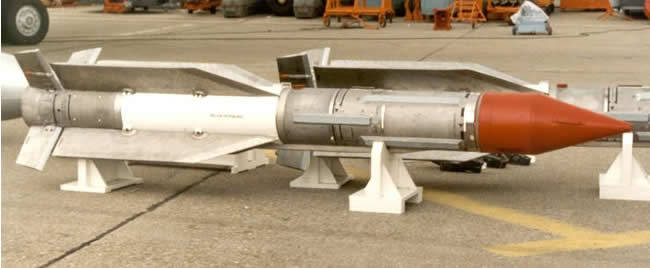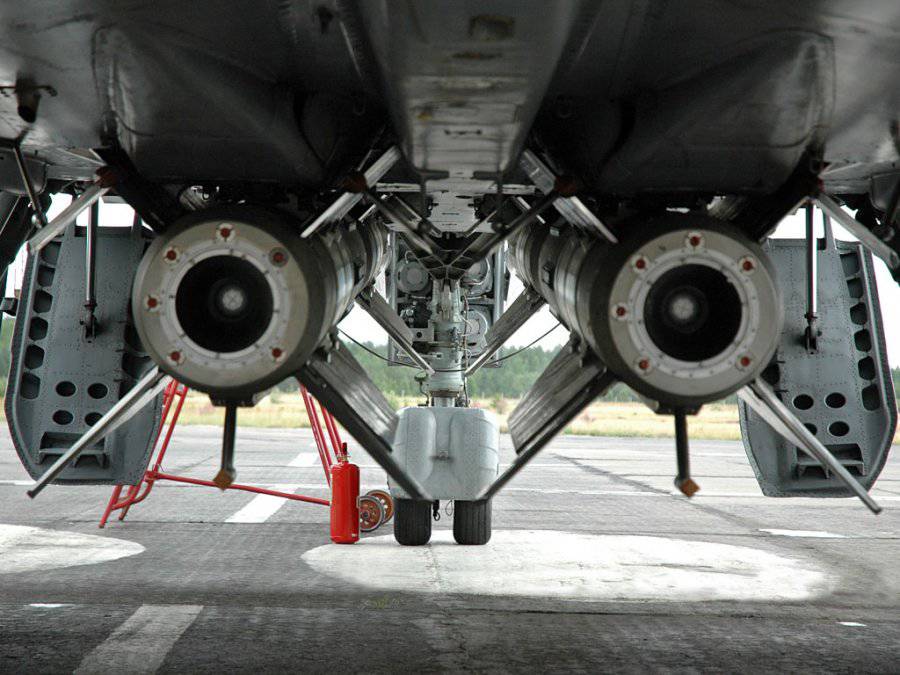Upgraded P-33
Many skeptics have argued that P-33 is just a copy of the American counterpart of AIM-54 "Phoenix". The main argument of such skeptics is a surprisingly similar appearance. Indeed, the same caliber, the similarity of the form and approximately the same length can confound many fans who are interested in military equipment, but do not understand it at a professional level. However, any expert only laugh at such arguments. After all, P-33 is exclusively domestic development, which was created by the best minds of military scientists. Close external characteristics are easy to explain - the same requirements for rockets and very similar conditions of use simply created two rockets that are surprisingly similar to each other, at least in external form, which corresponded to aerodynamic conditions.
For the first time, the need to create a rocket of the similar P-33 was started back in the distant sixties of the twentieth century. Then it was decided to create a rocket that could become the main weapons modifications of the MiG-25 fighter. As is known, the next model of the fighter received the name MiG-31. And for the new aircraft needed a unique rocket, which could have a range of 120 kilometers. After the creation of a whole series of rockets with constant improvements, a new weapon, the P-33, was created. Outwardly resembling the American counterpart, it greatly exceeded its reliability, was simple and had a much lower cost. All this became possible thanks to the fast electronic radio beam transfer. It must be said that such an innovation made it possible to re-equip in a relatively short time, adopting the P-33 as the main weapon for the MiG-31. In the USA, the specialists had to face a serious problem - each Phoenix rocket cost one million dollars. So rearmament was seriously delayed due to the usual lack of funding. This was also the reason for the fact that the Phoenix was practically not used in training exercises, and it was used with great reluctance during combat operations. Due to the same high cost in 2004, it was decided to remove this missile from service. Well, and the P-33 continues to be successfully modified, which allows it to constantly correspond to world peers.

The P-33 rocket itself was also notable for simplicity. In general, it consisted of four compartments. The first of them contained a radio and contact fuse, as well as the GOS. In the second was the autopilot and high-explosive fragmentation warhead. In the third compartment was located the power plant, which consisted of a dual-mode engine operating on solid fuel, as well as an elongated gazovod and nozzle tank. And, finally, the fourth compartment contained in itself a gas generator, a turbogenerator and steering machines operating on hot gas, which was constantly assembled around the gas maker.
The rocket, like many predecessors, was located in ejection installations under the fuselage.
The maximum flight range was made possible through the use of two-stage guidance. First, it is inertial control, which is involved only at the beginning of the flight. At the end of the flight, guidance is performed by semi-active guidance, when the target is captured by the all-view homing vessel. Immediately before the launch of the rocket, angular target designation for the position of the questionnaire is set by the aircraft carrier. A superbly designed rocket system is capable of independently detecting a target against the background of the earth's surface, after which it recognizes and eliminates interference, which greatly increases the likelihood of hitting. It must be said that passive interference does not have any impact on the course of work of the GOS. The well-developed design of the plumage, the system for controlling the rocket in almost the entire range and the possibility of hitting targets at very low altitudes allowed the P-33 to remain relevant and competitive, until more modern counterparts, such as RVV-BD, appeared.

Information